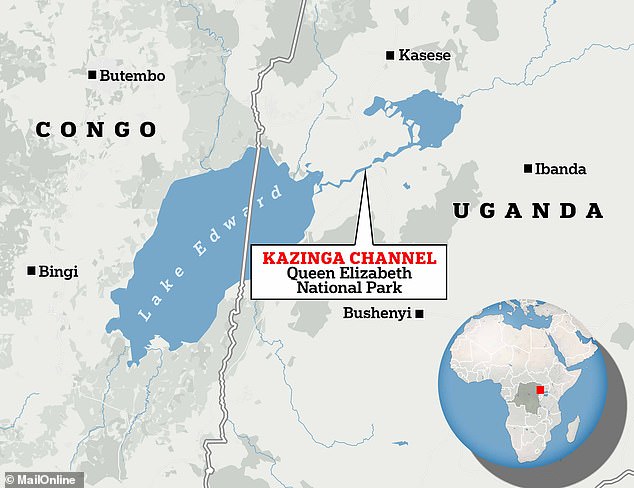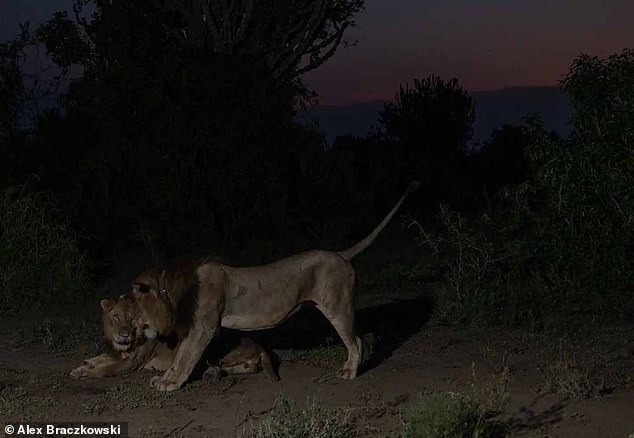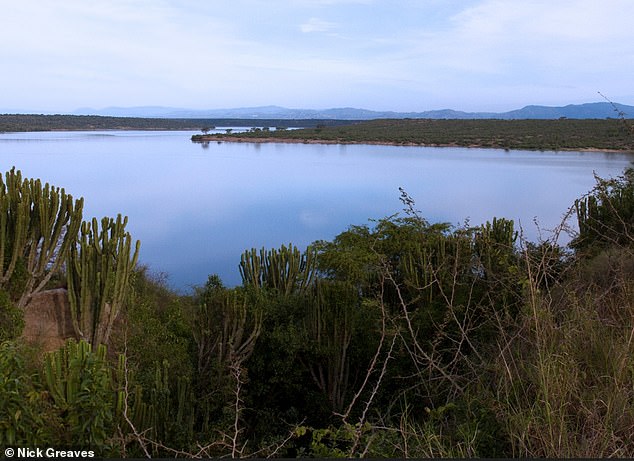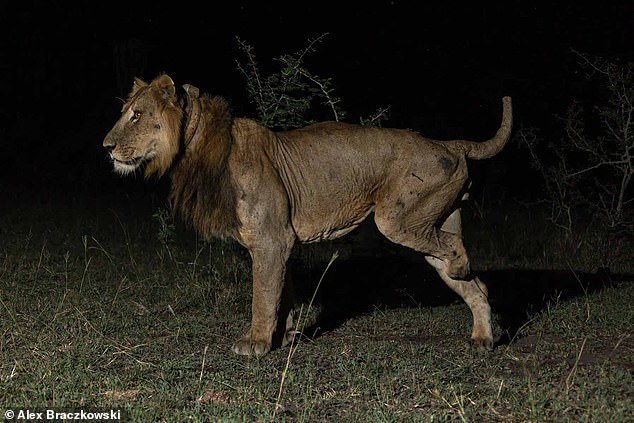Finding a partner can be problematic at the best of times.
But when you’re an amputee crossing a vast expanse of water, it can literally be a matter of life and death.
Jacob, a three-legged African lion, has broken the record for the longest swim by a big cat in search of a female, scientists say.
Together with his brother Tibu, Jacob traveled about a mile (1.6 km) through the dangerous crocodile-infested waters of the Kazinga Channel in Uganda.
The two brothers risked their lives in a desperate search for a female to mate with after hearing her roars from the other side.
Along with his brother Tibu, Jacob broke the record for the longest swim by a big cat in search of a female, scientists say. In 2020, Jacob was caught in a trap that severed his left hind leg.

Three-legged Jacob and his brother Tibu crossed the Kazinga Channel in Uganda’s Queen Elizabeth National Park.
Scientists used heat tracking drones to track the two African lions as they crossed the Kazinga Channel in Uganda’s Queen Elizabeth National Park.
“It was quite dramatic,” Dr. Alexander Braczkowski, a conservation biologist at Griffith University in Australia, said. New York Times.
“It looks like two tiny heat signatures crossing an ocean.”
In 2020, Jacob was caught in a poacher’s trap that severed his left hind leg, although he had been fitted with a satellite collar that allowed rangers to locate him and save his life.
Four years later, Jacob proved he is strong enough to traverse the Kazinga Channel, which is infested with hippos and crocodiles up to 16 feet long.
Crocodiles can potentially kill lions with a lethal bite, especially in water where cats are at risk of drowning.
Lions can swim, but they usually only do so when it is really necessary, whether in search of food or a mate.

The brothers risked their lives in a desperate search for a female to mate with after hearing her roars from the other side.

Uganda’s Kazinga Channel (pictured) links Lakes George and Edward and is a destination for tourists, as popular boat cruises provide incredible wildlife viewing opportunities.
According to Dr. Braczkowski, Jacob and Tibu accomplished the longest swim recorded by lions, covering an estimated distance of between 0.9 and 1.2 miles (1.5-2 km).
Although this may seem like an extreme effort in the search for love, mating opportunities for males are increasingly scarce.
In Queen Elizabeth National Park, males outnumber females two to one, partly due to the deliberate poisoning of lionesses (and cubs) from which populations are still recovering.
In Africa, lions face threats such as retaliatory killing in response to livestock predation and poaching for their body parts, such as teeth, according to the Wildlife Conservation Society (WCS).
Dr. Braczkowski estimates there are 40 lions in the park today, up from 70 in 2018.
There is only one species of lion (Panthera leo), but there are two subspecies: the African lion and the Asiatic lion.
Globally, populations are described as declining and “vulnerable” according to the IUCN red list, global conservation status inventory and species extinction risk.
According to a study led by the University of Oxford last year, lions are “increasingly pushed to the limit” as the population continues to suffer “devastating declines.”
Although the total population of wild lions in Africa can be estimated between 20,000 and 25,000 individuals, many of them live in small, fragmented populations at risk of disappearing.
Jacob and Tibu’s ambitious journey has been described in an article accepted for publication in the journal Ecology and Evolution.

